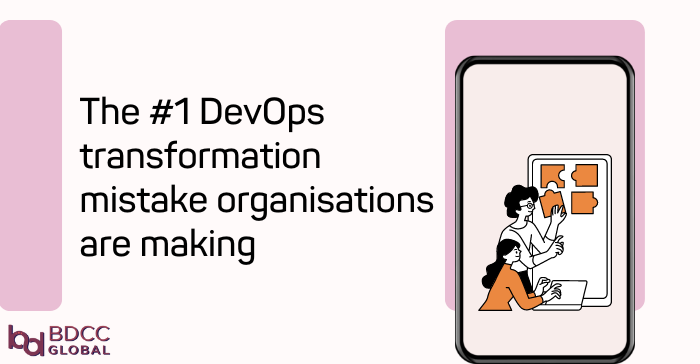
In the 7.5 years we’ve been working in DevOps what’s the #1 DevOps Transformation mistake we keep seeing over and over again?
The Answer? Rushing into launching an entire DevOps transformation programme before making the case for WHY the “status quo” is no longer good enough.
Most transformation efforts fail
It’s no secret that change is hard and most transformation efforts fail. Leading a change programme is probably one of the hardest things you might do in your career. Too many change teams are action-oriented, and they want to rush into the actual change activities themselves (training, new tools, new ways of working etc) before they have laid the groundwork for the transformation.
The #1 thing any change team needs to do FIRST is to explain why the “status quo” is no longer good enough BEFORE any discussion of the solution (e.g. a DevOps transformation).
Creating a sense of urgency
John Kotter calls this “creating a sense of urgency” and it is the first of 8 steps he outlines in his now famous Harvard Business Review article “Leading Change: Why Transformation Efforts Fail” in 1995.
“When is the urgency rate high enough? From what I have seen, the answer is when about 75% of a company’s management is honestly convinced that business-as-usual is totally unacceptable.”
John Kotter, HBR (1995)
If you can establish a broad consensus that “change needs to happen” (Kotter suggests you need 75% of the management bought into the need for change) then when you shift the conversation to the WHAT & HOW of the transformation your change agenda will meet fertile ground. Without this, you will meet crossed arms and shaking heads (resistance to change) because people believe that the status quo is still good enough. Why change if the “old way” is still working?
Stages of behaviour change
When we look at the behavioural research into change – the Trans-Theoretical Model of behavioural change (TTM for short) – we can see in the first stage (they call it “pre-contemplation”) people are unaware of the problem and the need for change.
To move them to stage 2 – awareness of the problem – and to get them to contemplate the need for change, and the potential solutions, first you need to get them to really understand and internalise the problem and why the status quo is no longer good enough.
Too many change programmes launch straight into the Stage 3 Preparation and Stage 4 Action phases because the teams are excited to get started (and probably incentivised to “make stuff happen”). The transformation team has probably already gone through stages 1 & 2 themselves… they are already “bought in” to the need for change, and probably have the firm belief that DevOps is the best solution to their organisations’ IT challenges.
But they need to allow space and time for the rest of the organisation to transition through stage 1 & 2. They should start by creating a internal marketing plan that begins with laying out the business case as to WHY change needs to happen BEFORE they start making the case for why DevOps is the solution to meet the businesses’ evolving IT needs.
Creating the need for change
Making the business case for why “business as usual” is no longer good enough is different and unique to each market sector. For example, if you are in retail there is no lack of evidence regarding the “death of the high street” and the success on online fashion retailers. If you’re in retail banking you might highlight the success of online challenger banks like Starling or Revolut in order to make the case for change. Making the case for the need for change requires a deep analysis and understanding of the organisation, its value proposition and the market in which it operates.
So if you’re leading the transformation inside your organisation make sure you lay the foundations for success by first analysing and communicating the reasons why change is necessary in the first place before you go all out trying to make people change their behaviours and ways of working. You’ll find that the time spent will pay off in the long run, and significantly increase your chances of a successful transformation.
Disclaimer: The blog was originally posted on www.devopsgroup.com
BDCC
Latest posts by BDCC (see all)
- Cloud computing in healthcare: Uses and benefits - June 23, 2025
- What are the Best Practices for Terraform File Structure? - June 10, 2025
- From Monolith to Microservices: DevOps Strategies For a Smooth Transition - June 5, 2025

